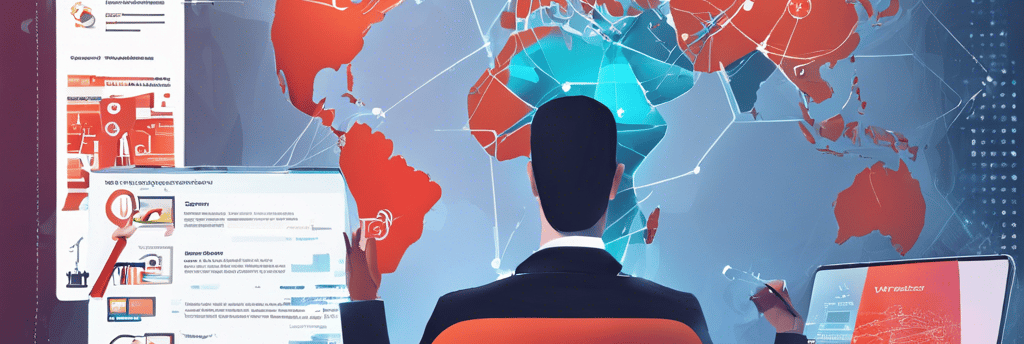Vulnerability Management
In today’s digital landscape, cyber threats are constantly evolving. Organizations must remain proactive in identifying and addressing weaknesses in their systems to prevent cyberattacks. This is where Vulnerability Management comes into play. In this blog, we will explore what vulnerability management is, the steps involved, its benefits, and best practices to follow.
CYBERSECURITY


What is Vulnerability Management?
Vulnerability management is the continuous process of identifying, evaluating, treating, and reporting security vulnerabilities in software, hardware, and networks. The goal is to reduce the attack surface and minimize the risk of exploitation by threat actors. Think of it as maintaining a secure home. Just as you regularly inspect your doors, windows, and locks for weaknesses, vulnerability management helps organizations continuously check their systems for potential security flaws that could be exploited by attackers.
How Vulnerability Management Works
Vulnerability management involves regularly scanning systems, software, and networks to identify potential vulnerabilities. These weaknesses are then assessed and prioritized based on their severity and the potential impact they could have on the organization. Afterward, the vulnerabilities are addressed through patching, configuration changes, or mitigation measures.
In essence, it’s an ongoing cycle of detection, evaluation, and remediation.
Steps Involved in Vulnerability Management
1. Identifying Vulnerabilities :The first step is to identify vulnerabilities across all IT assets, including servers, devices, networks, and applications. Automated vulnerability scanners (e.g., Nessus, OpenVAS) are commonly used to detect known vulnerabilities by comparing your systems against known threat databases.
Example: Running a vulnerability scanner is like conducting a home inspection to identify areas that need repair.
2. Classifying and Prioritizing: Not all vulnerabilities are equally dangerous. After vulnerabilities are identified, they need to be classified and prioritized based on their severity and the potential impact on the organization. A common framework used is the CVSS (Common Vulnerability Scoring System), which assigns scores to vulnerabilities based on their severity level.
Example: Think of this step as deciding whether to fix a broken door lock before addressing a leaky faucet. You prioritize the most serious issues first.
3. Remediation :Once vulnerabilities are prioritized, the next step is to fix or mitigate them. This can be done through:
Patching: Applying software updates that address the vulnerability.
Configuration Changes: Adjusting system settings to minimize risk.
Workarounds: Temporary fixes that reduce the likelihood of exploitation.
Example: If you discover a broken lock during your inspection, you fix it (patch) immediately, or at least secure it temporarily until it can be fixed.
4. Verification: After the vulnerabilities are addressed, it’s essential to verify that the remediation was successful. This involves rescanning the systems to ensure the vulnerabilities have been fully resolved.
Example: After fixing the broken lock, you would test the door to ensure it’s now secure.
5. Reporting and Continuous Monitoring: The final step involves documenting the vulnerabilities, the actions taken to remediate them, and any lessons learned. Continuous monitoring is vital to ensure new vulnerabilities are detected and addressed as they arise.
Example: Just as you might regularly check your home security system, continuous monitoring ensures that no new weaknesses appear in your systems over time.
Benefits of Vulnerability Management
Proactive Risk Reduction: By continuously scanning and addressing vulnerabilities, you reduce the risk of cyberattacks.
Improved Security Posture: Regular vulnerability management improves your organization’s overall security, making it harder for attackers to exploit weaknesses.
Regulatory Compliance: Many industries require regular vulnerability assessments to comply with regulations like GDPR, HIPAA, or PCI-DSS.
Cost Savings: Addressing vulnerabilities before they are exploited reduces the cost of potential breaches, downtime, and recovery efforts.
Informed Decision-Making: Vulnerability management provides valuable data that can be used to make informed security decisions and allocate resources effectively.
Best Practices for Vulnerability Management
Regular Scanning: Schedule vulnerability scans regularly—at least monthly or whenever new systems or applications are added.
Best Practice: Use automated scanners (e.g., Nessus, Qualys) to perform frequent scans and identify potential weaknesses.
Prioritize Critical Vulnerabilities: Focus on addressing high-risk vulnerabilities first, especially those with a high CVSS score or that affect critical systems.
Best Practice: Use the CVSS scoring system to prioritize patching efforts.
Patch Management: Implement an efficient patch management process to ensure that patches are applied promptly.
Best Practice: Set up automatic patching for critical software or systems whenever possible.
Continuous Monitoring: Keep an eye on your network and assets at all times to detect vulnerabilities as soon as they emerge.
Best Practice: Utilize SIEM (Security Information and Event Management) systems to monitor for signs of exploitation.
Collaboration Between Teams: Vulnerability management is a team effort involving security, IT, and development teams. Ensure clear communication and coordination across departments.
Best Practice: Create a vulnerability management policy and ensure all stakeholders are aware of their roles and responsibilities.
Regular Reporting and Metrics: Keep track of vulnerability management progress through regular reporting, including the number of vulnerabilities detected, patched, and the time taken to fix.
Best Practice: Use tools that provide dashboards and reports to help you monitor vulnerability trends and your security posture.
Training and Awareness: Regularly train employees and developers on secure coding practices and the importance of vulnerability management.
Best Practice: Offer security awareness training to staff to minimize human errors that can lead to vulnerabilities.
Conclusion
Vulnerability management is a crucial component of a strong cybersecurity strategy. By proactively identifying, assessing, and addressing vulnerabilities, organizations can significantly reduce the risk of cyberattacks and improve their overall security posture.
By following best practices such as regular scanning, prioritizing critical vulnerabilities, and continuously monitoring your systems, you can stay one step ahead of attackers and keep your data and infrastructure secure.
